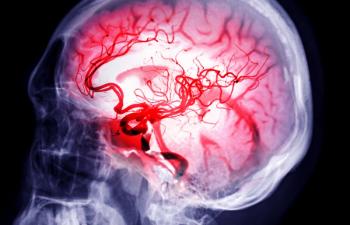
Defining Heart Failure: HFpEF and HFrEF
Ryan Jacobsen, PharmD, BCPS leads a discussion on defining heart failure with preserved ejection fraction (HFpEF) and heart failure with reduced ejection fraction (HFrEF) as well as the importance of staging and functional classification criteria.
Episodes in this series

Richard Mullvain, RPh, BCCP, BCPS, CCCC: Hello, and welcome to this Pharmacy Times® Peer Exchange titled “Advancements and Considerations in the Treatment of Heart Failure.” My name is Richard Mullvain. I’m a cardiology clinical specialist pharmacist at Essentia Health in Duluth, Minnesota. I’m also a STEMI [ST-segment elevation myocardial infarction] program manager and involved with our cardiovascular and heart failure clinics. Joining me for this discussion is Alexandra Goncharenko. She is a heart failure clinical pharmacy specialist with Advocate Medical Group in Chicago, Illinois. We also have Ryan Jacobsen, an ambulatory care clinical pharmacy specialist with the University of Iowa Hospitals & Clinics’ Heart and Vascular Center. He’s also a clinical associate professor at the University of Iowa College of Pharmacy. Also joining us is Randy McDonough, a co-owner and director of clinical services at Towncrest Pharmacy in Iowa. He’s also a professor of pharmacy management and innovation at Loma Linda University School of Pharmacy [in Loma Linda, California]. We’re very pleased to have you guys here today.
Today we’re going to be talking about several topics pertaining to heart failure treatment, including discussions around standard of care, available and emerging pharmacological therapies, and advice for clinicians managing patients with heart failure. Let’s get started.
We’d like to start by giving an overview of heart failure and heart failure treatment. To do that, we need to start by defining heart failure and why the proper definition of heart failure is important for treatment. Ryan, could you jump in and help us define heart failure and understand what it is?
Ryan Jacobsen, PharmD, BCPS: Yes. Thanks, Richard. There are 2 broad classifications for heart failure: the first being heart failure with preserved ejection fraction, and the second being heart failure with reduced ejection fraction. Heart failure with preserved ejection fraction has also historically been referred to as diastolic dysfunction or diastolic heart failure. It involves impaired relaxation of the ventricle. Heart failure with reduced ejection fraction has historically been referred to as systolic dysfunction or systolic heart failure. It involves impaired contraction of the left ventricle. These 2 classifications, or forms, of heart failure include similar symptomatology, namely dyspnea, or shortness of breath, fatigue, and edema.
Given the similar symptomatology, these 2 forms of heart failure are defined based on cardiac imaging. The gold standard for that is echocardiogram. Heart failure with reduced ejection fraction involves an ejection fraction less than 40%, whereas the preserved ejection fraction would be greater than 50%. The reason this is so important is that it helps determine guideline-directed medical therapy. We have high-quality evidence of benefit of medication therapy in heart failure with reduced ejection fraction, including reduced hospitalizations and mortality benefit. We’re going to talk a little more about that later. But we don’t have solid, high-quality evidence of benefit in heart failure with preserved ejection fraction. Today’s discussion centers on heart failure with reduced ejection fraction.
There’s further classification, including staging according to the American College of Cardiology [ACC] and the American Heart Association [AHA] recommendations and functional classification according to the New York Heart Association scheme. The ACC/AHA stages include stage A. These are patients who are high risk for heart failure, but they don’t have any structural heart disease or symptoms of heart failure. Care for these patients is aimed at treating modifiable risk factors that increase risk for development of heart failure, like hypertension or diabetes. Stage B includes patients who already have some evidence of structural heart disease—probably on echocardiogram—but they haven’t developed signs or symptoms of heart failure. Stage C includes structural heart disease with prior or current symptoms of heart failure. Many of the therapies, the evidence-based guideline-directed medical therapies we’re going to be talking today, involve those patients in stage C. Stage C is refractory or end-stage heart failure that requires specialized interventions in the form of left ventricular assist devices and cardiac resynchronization therapies.
The functional classification according to the New York Heart Association is based on physical activity of the patient. Class 1 would be no limitation of physical activity. Class 2 would be slight limitation. Class 3 would be marked limitation. And then class 4 would be a patient who’s unable to perform ordinary physical activity without developing symptoms of heart failure, like shortness of breath or fatigue, or even symptoms of heart failure at rest. Ideally, we want to catch patients early in the heart failure development process so that we can avoid some of these end-stage scenarios.
Transcript edited for clarity.
Newsletter
Stay informed on drug updates, treatment guidelines, and pharmacy practice trends—subscribe to Pharmacy Times for weekly clinical insights.










































































































































































































